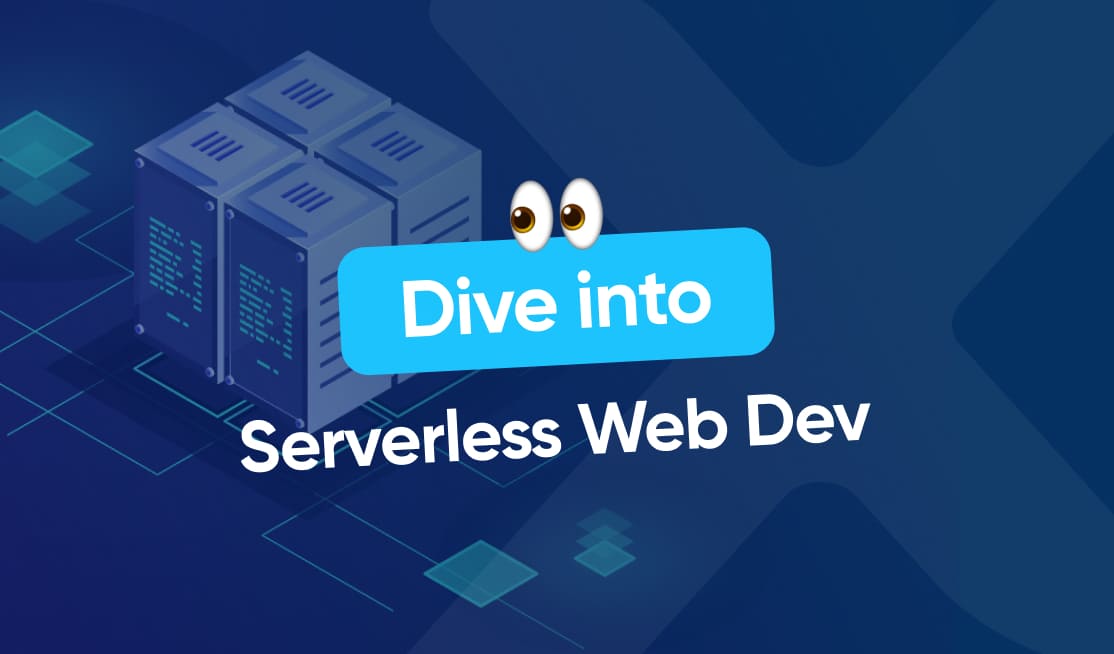
Serverless architecture has become a game-changer in the world of web development. It offers developers a way to build and deploy applications without the need to manage servers or infrastructure. In this article, we will explore the ins and outs of serverless architecture, its role in web development, how it compares to traditional approaches, implementation strategies and best practices, and what the future holds for this innovative technology.
Understanding Serverless Architecture
Before delving into the details, let’s start by understanding the basic concepts of serverless architecture.
Serverless architecture, also known as Function-as-a-Service (FaaS), is an approach where developers focus on writing and deploying functions rather than managing servers. It allows developers to break down their application into small, independent functions that are triggered by specific events. These functions run in ephemeral containers and scale automatically based on demand.
This architecture eliminates the need for resource planning and infrastructure management, enabling developers to focus on writing code and delivering value to users. It revolutionizes the development process by shifting the responsibility of infrastructure management to cloud providers.
Now, let’s dive deeper into the key components of serverless architecture.
Key Components of Serverless Architecture
Serverless architecture consists of several key components that work together to create fully functional applications:
- Event Triggers: Events, such as HTTP requests or database updates, trigger the execution of serverless functions. These events can be configured to respond to specific conditions or changes in the system. For example, an e-commerce application can trigger a function to send a confirmation email to the customer after a successful purchase.
- Function: A function is a self-contained piece of code that performs a specific task or serves a particular purpose. It can be written in various programming languages, such as JavaScript, Python, or Go. Functions are designed to be stateless, meaning they don’t retain any information between invocations. This allows for easy scaling and distribution of workload.
- Compute Service: The compute service provided by the cloud provider dynamically manages the execution of functions, ensuring scalability and availability. When an event triggers a function, the compute service provisions the necessary resources to run the function and then releases them once the function completes its task. This on-demand allocation of resources optimizes cost and performance.
- External Services: Serverless functions can interact with external services, such as databases or third-party APIs, to perform complex operations. For example, a function can retrieve data from a database, process it, and then send the result to another service for further processing. This flexibility allows developers to leverage existing services and integrate them seamlessly into their serverless applications.
Combined, these components enable developers to build highly scalable, event-driven applications without the overhead of managing servers or infrastructure. The serverless architecture paradigm empowers developers to focus on writing efficient and modular code, while the cloud provider takes care of the underlying infrastructure, ensuring reliability and scalability.
Now that we have a solid understanding of the key components, let’s explore the benefits and use cases of serverless architecture in more detail.
The Role of Serverless Architecture in Web Development
Serverless architecture offers numerous benefits that make it an enticing option for web development projects. In this article, we will delve deeper into the advantages of serverless architecture and explore some potential challenges that developers may face.
Benefits of Using Serverless Architecture
One of the primary benefits of serverless architecture is scalability. With traditional approaches, scaling applications to handle fluctuations in traffic can be a complex and time-consuming task. However, with serverless architecture, applications can effortlessly scale up or down based on demand, ensuring optimal performance and user experience.
Cost efficiency is another advantage of serverless architecture. Since you only pay for the actual usage of functions and don’t have to maintain idle servers, costs can be significantly reduced. This makes serverless architecture ideal for startups and businesses with unpredictable workloads.
Moreover, serverless architecture promotes faster development cycles. Developers can focus on writing smaller, more manageable functions, reducing complexity and speeding up the time it takes to bring new features to market. This agility allows businesses to stay ahead of the competition and quickly adapt to changing market demands.
Potential Challenges and Solutions
While serverless architecture brings numerous advantages, it’s essential to be aware of potential challenges and address them proactively. One such challenge is the lack of granular control over infrastructure. With serverless architecture, developers rely heavily on the cloud provider’s infrastructure management. This can lead to limitations in configuring network settings or specific server components. However, cloud providers are continually improving their offerings, providing more flexibility and customization options to mitigate these limitations.
Cold start latency is another challenge, especially in scenarios where functions are triggered less frequently. When a function is triggered after a period of inactivity, there may be a performance delay as the cloud provider initiates a new container to execute the function. Techniques like keeping functions warm or using pre-warming mechanisms can help mitigate this latency and ensure smooth and responsive user experiences.
By addressing these challenges upfront and staying updated with best practices, developers can make the most of serverless architecture in their web development projects. With its scalability, cost efficiency, and faster development cycles, serverless architecture is revolutionizing the way web applications are built and deployed.
In conclusion, serverless architecture offers a plethora of benefits that make it an attractive option for web development. From scalability to cost efficiency and faster development cycles, the advantages of serverless architecture are hard to ignore. However, it’s crucial to be aware of potential challenges and proactively address them to ensure a successful implementation. By staying updated with best practices and leveraging the flexibility provided by cloud providers, developers can harness the full potential of serverless architecture and create innovative and high-performing web applications.
Comparing Serverless Architecture with Traditional Web Development
Now, let’s take a closer look at how serverless architecture compares to traditional approaches in web development.
Serverless architecture is a modern approach that offers several advantages over traditional web development methods. One key aspect to consider is the performance and scalability benefits. In traditional web development, developers need to predict server capacity requirements to handle peak loads effectively. This often leads to challenges in scaling, as it can be time-consuming and may result in either over-provisioning, leading to wasted resources, or under-provisioning, causing a degraded user experience. On the other hand, serverless architecture automatically scales based on demand, ensuring optimal performance and cost savings.
Performance and Scalability
Traditional web development approaches require developers to anticipate and provision enough server capacity to handle peak loads. Scaling up or down can be time-consuming and often results in either over-provisioning (wasting resources) or under-provisioning (degraded user experience). In contrast, serverless architecture scales automatically based on demand, ensuring optimal performance while saving costs.
Another crucial aspect to consider when comparing serverless architecture with traditional web development is cost efficiency and maintenance. In traditional approaches, hosting applications on dedicated servers or virtual machines involves ongoing maintenance costs. The development team is responsible for tasks such as operating system updates, security patches, and infrastructure management. This can be a significant operational overhead. On the contrary, serverless architecture shifts these responsibilities to the cloud provider, reducing maintenance efforts for developers and allowing them to concentrate solely on coding.
Cost Efficiency and Maintenance
With traditional approaches, hosting applications on dedicated servers or virtual machines involves ongoing maintenance costs. The responsibility of operating system updates, security patches, and infrastructure management falls on the development team. In serverless architecture, the cloud provider handles these tasks, reducing operational overhead and allowing developers to focus solely on coding.
Implementing Serverless Architecture in Web Development
If serverless architecture sounds enticing, you might wonder how to implement it effectively in your web development projects.
Choosing the Right Serverless Platform
Several cloud providers offer serverless platforms, each with its unique features and pricing models. Before making a decision, consider factors such as supported programming languages, integration capabilities, and pricing structures. Popular serverless platforms include AWS Lambda, Google Cloud Functions, and Microsoft Azure Functions.
Best Practices for Serverless Web Development
To ensure success in serverless web development, it’s crucial to follow best practices:
- Decompose Applications: Break down your application into smaller, independent functions that can be deployed and scaled individually.
- Design for Statelessness: Avoid storing session data or other stateful information in your functions. Instead, leverage external services, such as databases or cache layers.
- Ensure Fault Tolerance: Handle errors and exceptions gracefully, implementing mechanisms like retries, circuit breakers, and error logging.
- Monitor and Debug: Utilize monitoring and logging tools to monitor function invocations, detect performance bottlenecks, and debug issues effectively.
By adhering to these best practices, you can maximize the benefits of serverless architecture and build robust and scalable web applications.
The Future of Serverless Architecture in Web Development
As the adoption of serverless architecture continues to grow rapidly, it’s important to look ahead and anticipate future trends.
Emerging Trends and Predictions
One emerging trend is the convergence of serverless architecture with containerization technologies, like Kubernetes. This integration allows developers to take advantage of both worlds, combining the scalability and cost benefits of serverless with the flexibility and portability of containers.
Another prediction is the rise of multi-cloud and hybrid-cloud serverless architectures. Organizations will likely leverage the strengths of multiple cloud providers or choose a hybrid approach to maximize flexibility and avoid vendor lock-in.
Preparing for the Future of Web Development
To stay ahead in the rapidly evolving web development landscape, it’s vital to continually upskill and stay updated with the latest advancements in serverless architecture. Attend conferences, explore online resources, and actively participate in the serverless developer community to expand your knowledge and network.
In conclusion, serverless architecture is revolutionizing the way we develop web applications. Its scalability, cost efficiency, and simplified maintenance make it an attractive choice for businesses of all sizes. By understanding the basics, overcoming challenges, and following best practices, developers can unlock the full potential of serverless architecture and pave the way for the future of web development.


